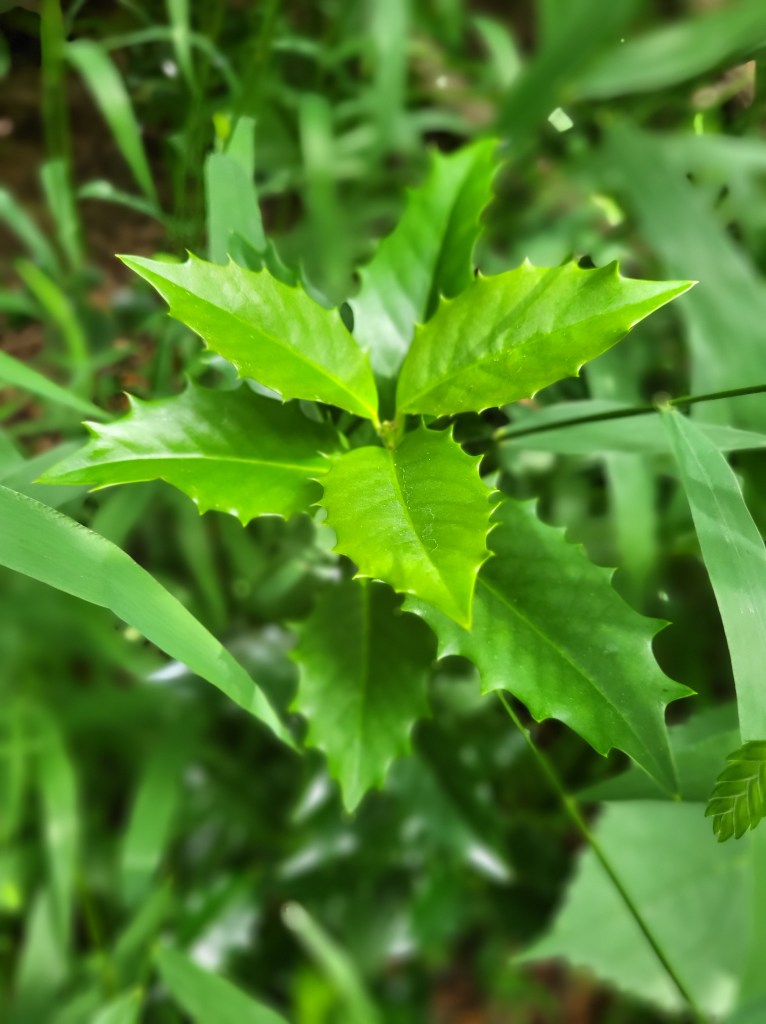I am an optimistic gardener, expecting the best even when my neglect should bring trouble. My too often sporadic efforts at deer control occasionally yield beneficial results. A spurt of summer growth on the Batwing Japanese maple (Acer pictum ‘Usugumo’, below) was quickly nibbled prior to the semi regular repellent treatment. I don’t recall if this, or any Japanese maple, has been sprayed in the past, but now I know. Branches within reach will be sprayed.

In any case, the unintended pruning has resulted in growth of multiple small branches that should mature long before our first frosts. Not that I prune much of anything, but pruning of woodies late in summer can result in growth that is damaged by early cold. Deer, of course, do not care about such trivialities.

The well-used path to the rear garden (above) had turned to mud, so granite steppers were added, and the garden was expanded several years ago. It is quickly growing into a delightful mass of foliage and flowers. Today, I noticed several tall weeds gaining prominence, so for the first time in many weeks, I pushed through the foliage to pull the offenders.

Here, I see two blue mist shrubs (Caryopteris), one with yellow foliage (above), the other variegated (below), that are obscured from view. Both should be relocated in late autumn before they are lost in this mass of foliage. But, besides this minor issue, I am quite pleased that the primary features in this planting continue to stand out while Verbena bonariensis, blackberry lilies, and a variety of toad lilies (Tricyrtis) and ground orchids expand to fill any open ground.

While pulling hefty weeds from beneath the gordlinia, I spotted a holly seedling of unknown provenance (below). While this seedling is nearest a Nellie R. Stevens, there are multiple hollies closeby, and the seedling could be related to any. In the short term, it will stay, but clearly, a holly growing to twenty feet tall is inappropriate growing beneath the shrubby gordlinia. I am curious to see what becomes of this chance seedling, so the holly is likely to be kept and then transplanted rather than discarded. Some day.

The gordlinia (x Gordlinia grandiflora, below) is nearing peak bloom, and again, I am reminded that this is an excellent, shrubby tree, but a step below the splendid Franklinia (Franklinia alatamaha) it replaced. Gordlinia is a cross between Franklinia and gordonia, and while its flowering and foliage are similar to Franklinia’s, it falls slightly short in all aspects. Still, since I’ve been unable to locate a Franklinia of substantial size to replace one lost as its surrounding soil became increasingly moist, gordlinia is a superb addition to the garden. I would add the Franklinia if one could be found, but not in place of the gordlinia.

I realize this summer that this is not the only overly congested area of the garden as several have reached their peak. Narrow paths to reach areas beyond have covered over. My first thought is, I don’t need to get back there anyway, but probably I do, so some pruning will be required. This is hardly a major chore, but I prefer to let the garden grow with as little interference as possible. Some managing will be necessary to control this jungle.
I live in northern VA (hello, neighbor) and have tried to grow toad lilies from bare-root rhizomes several times. I have planted them in rich, fertile soil in a well-shaded spot and tried to keep them consistently moist. But not one has ever even sprouted.
Do you have any secrets suggestions to pass on?
I’ve found that toad lilies perform best in a half day sun, though preferably not the late afternoon sun. I have dozens of toad lilies and all that were planted from one gallon containers have thrived. However, all that were purchased as four inch pots or bare root have struggled, with several perishing. I have transplanted dense clumps with good roots that have had no problems. It is clear that my lack of after planting care is the culprit, with larger plants with well developed roots thriving despite my lack of care.